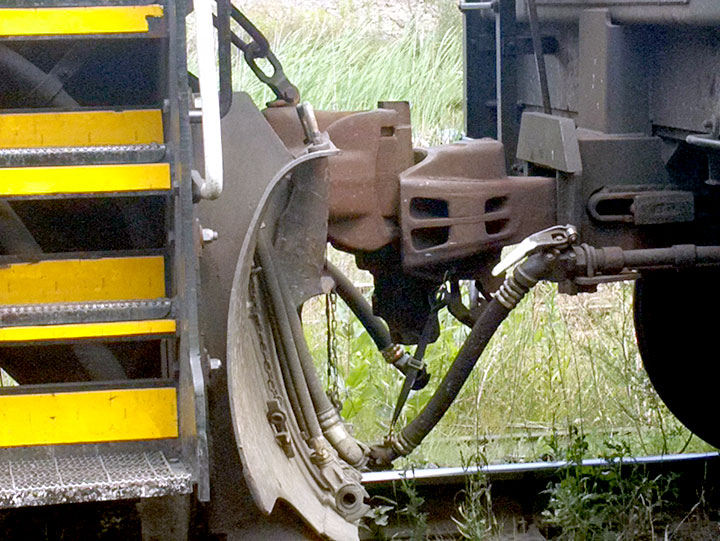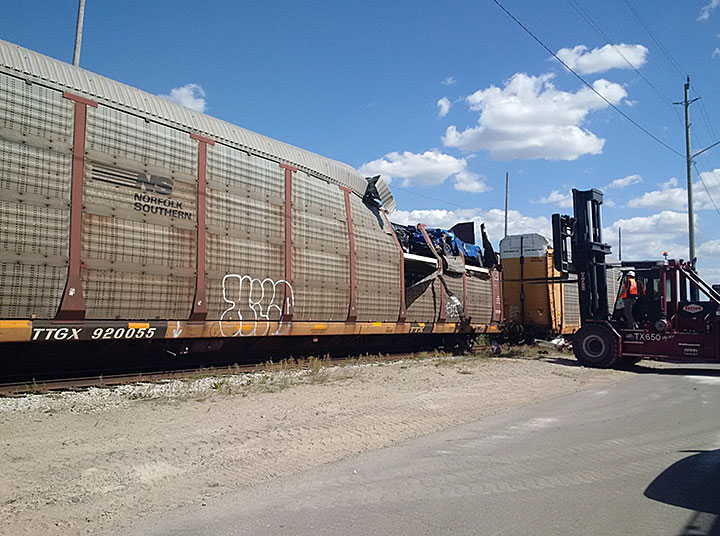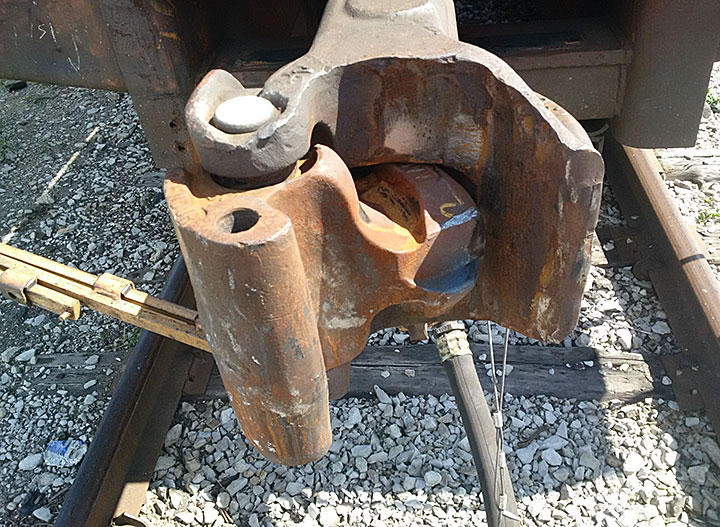Non-main-track runaway, collision and derailment
Canadian National Railway Company
Cut of cars and train A42241-29
Mile 0.0, Halton Subdivision
MacMillan Yard
Concord, Ontario
The occurrence
On , at about 1330 Eastern Daylight Time, a cut of 91 mixed commodity freight cars uncoupled from the locomotives on the east pullback track in the Canadian National Railway Company MacMillan Yard. The cut of cars, led by 24 tank cars loaded with petroleum crude oil (UN 1267), rolled uncontrolled into track R-13 where it struck train A42241-29 (train 422) head on at about 13 mph. Although none of the cars in the cut of cars derailed, the head-end locomotives of train 422 were shoved back 350 feet, and 10 cars on that train derailed on track R-13. One car on adjacent track R-11 also derailed. The derailed equipment included an empty (residue) tank car that last contained sulphuric acid (UN 1830). A second car on track R-11 and 1 car on track R-10 were damaged. Approximately 585 feet of track was damaged. There was no release of product and there were no injuries.
Media materials
News release
Worn coupler component led to July 2015 runaway, collision and derailment at CN MacMillan Yard in Toronto, Ontario
Read the news release
Deployment notice
TSB deploys team to MacMillan Yard in Toronto, Ontario, to assess runaway train
The Transportation Safety Board of Canada (TSB) is deploying a team of investigators to the CN MacMillan Yard in Toronto, Ontario, where a train ran away. The TSB will gather information and assess the occurrence.
Investigation information
Download high-resolution photos from the TSB Flickr page.
Class of investigation
This is a class 3 investigation. These investigations analyze a small number of safety issues, and may result in recommendations. Class 3 investigations are generally completed within 450 days. For more information, see the Policy on Occurrence Classification.
TSB investigation process
There are 3 phases to a TSB investigation
- Field phase: a team of investigators examines the occurrence site and wreckage, interviews witnesses and collects pertinent information.
- Examination and analysis phase: the TSB reviews pertinent records, tests components of the wreckage in the lab, determines the sequence of events and identifies safety deficiencies. When safety deficiencies are suspected or confirmed, the TSB advises the appropriate authority without waiting until publication of the final report.
- Report phase: a confidential draft report is approved by the Board and sent to persons and corporations who are directly concerned by the report. They then have the opportunity to dispute or correct information they believe to be incorrect. The Board considers all representations before approving the final report, which is subsequently released to the public.
For more information, see our Investigation process page.
The TSB is an independent agency that investigates air, marine, pipeline, and rail transportation occurrences. Its sole aim is the advancement of transportation safety. It is not the function of the Board to assign fault or determine civil or criminal liability.


